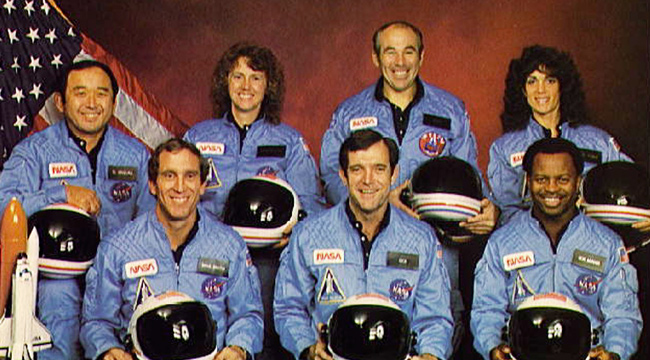
Thirty years ago, the space shuttle Challenger exploded over the Atlantic Ocean just 73 seconds after launching. All seven crew members were killed instantly on live television; the view of the space program altered forever less than 20 years after the moon landing, its most triumphant and unifying televised moment.
In an age that predates cell phones and social media, it’s estimated that more than 85 percent of the U.S. had heard about the explosion within an hour of it happening. The significance of this rapid spread of information speaks to the shell-shocked reactions of those who watched the launch. Indeed, the loss of the Challenger was one of those rare, historic moments where everyone remembers exactly where they were when the explosion happened.
Prior to the explosion, 1986 was slated to be the Year of the Shuttle, with NASA scheduling launches almost monthly. However, NASA’s hectic schedule led to scores of technical oversights, as well as “go fever,” a term first coined after the Apollo disaster of 1967, referring to a kind of fast-paced, end-game only methodology where deadlines seemingly mattered more than safety.
Suddenly, the once frequent shuttle launches (there were nine in 1985) came to an abrupt halt. While the enthusiasm for space travel had waned prior to the Challenger explosion, suddenly at the beginning of NASA’s most ambitious year, the public was left in shock. All shuttle missions were put on a 32-month hiatus while the Rogers Commission, a federally-appointed investigative team, went looking to find out what exactly went wrong. The commission, which included Neil Armstrong, the first man on the moon, and Sally Ride, the first woman in space (who did so on the Challenger shuttle), found that internal problems at NASA were responsible and that crucial warnings had been ignored.
While the root of the problem was still being sorted out, the death of Christa McAulliffe, the first civilian astronaut, and inaugural participant of Teachers in Space, dealt the biggest blow to the public. The program was intended to spark children’s interest in an over-budgeted space program, and McAulliffe’s charm and enthusiasm had made her something of a celebrity. After years of inactivity following McAulliffe’s death, the Teachers in Space program was officially discontinued in 1990. It would be 21 years before another civilian was permitted aboard a space shuttle.
That night was to be then-President Ronald Reagan’s State of the Union address. Originally set to tout the launch of the craft as a spirited reminder of America’s commitment to the space program, as well as the Teachers In Space initiative. Instead, the State of the Union was postponed one week in favor of him instead delivering a speech about the tragedy itself. It’s still considered to be one of the 20th century’s most significant speeches, helping to console a country hours after the tragedy.
Almost three years later, with redesigned shuttles and more oversight crews in place to avoid a repeat of the disaster, a veteran crew boarded the space shuttle Discovery on September 29, 1988, billed as NASA’s return-to-flight. Launches quickly resumed their frequency with some promotional gimmicks — like John Glenn’s return to space flight at the age of 77 — going toward restoring the public faith and interest. Though as the missions continued on, they again simply faded into the background.
The shuttle program was halted again in 2003 after the space shuttle Columbia disintegrated on re-entry, killing all seven crew members. Operations would resume in 2005, though it was known at the time that the entire program would be retired in 2011 to make way for new endeavors. Not long after the program’s retirement, Rogers Commission member Alton Keel told the Houston Chronicle that NASA had “lost its way and its vision,” ultimately costing them public support.
In the post-shuttle era, NASA has focused its intentions on working toward sending astronauts beyond low-orbit, with unmanned missions — such as the Curiosity rover’s crawl across Martian soil — allowing space exploration to make positive headlines once more. Add to that the presence of pop culture/science rockstars like Bill Nye and Neil DeGrasse Tyson, the continuing impact of science fiction (like well received space-based films The Martian and Interstellar), as well as private investors like Elon Musk with his Space X program, and the long climb back to a point of high public interest feels as though it is in progress.
Why does that matter and why should we mourn that once-lost enthusiasm as a non-human but still important casualty of the Challenger explosion? We are, of course, mired in a complex moment (aren’t we always?) where space exploration is obviously nowhere near our collective top priority, but to look toward the dark and mysterious expanse gives us a kind of purpose and a kind of hope for a future far different than that which we know. The astronauts that were lost in the Challenger explosion and the Columbia explosion — as well as all others who have perished in our long pursuit of discovery — knew the risk and the worth of their endeavors. To be scared by that cost is natural, but our turning back toward awe and interest at the possibility of exploration is the truest way that we can honor those lost to the pursuit of knowledge.
